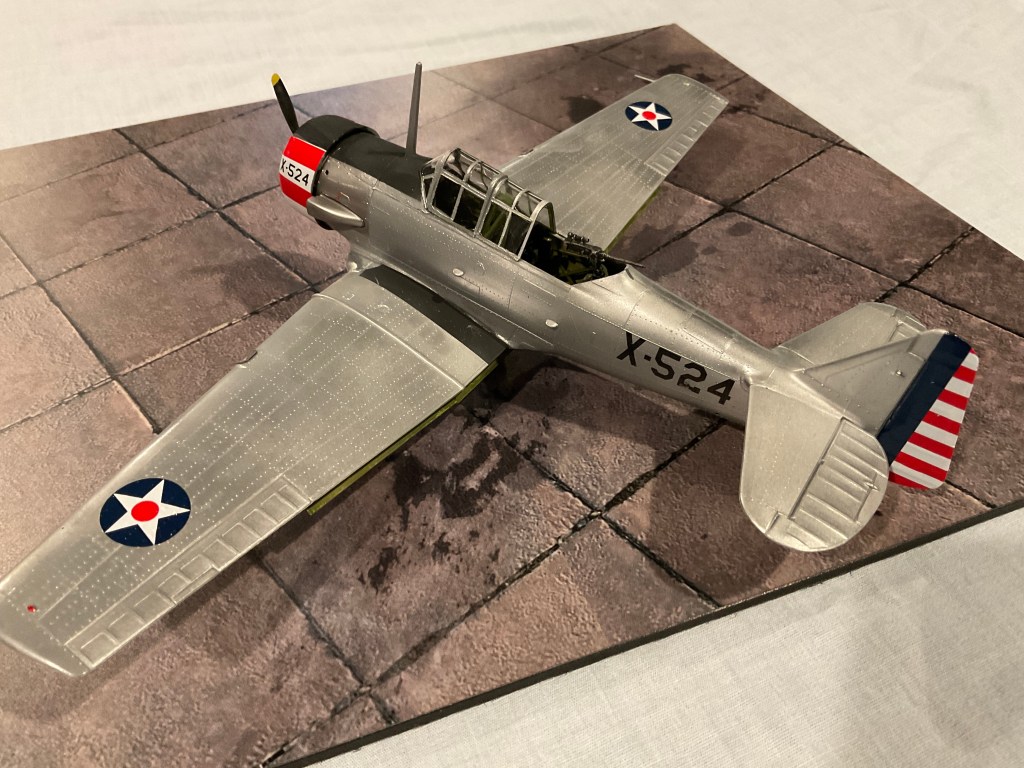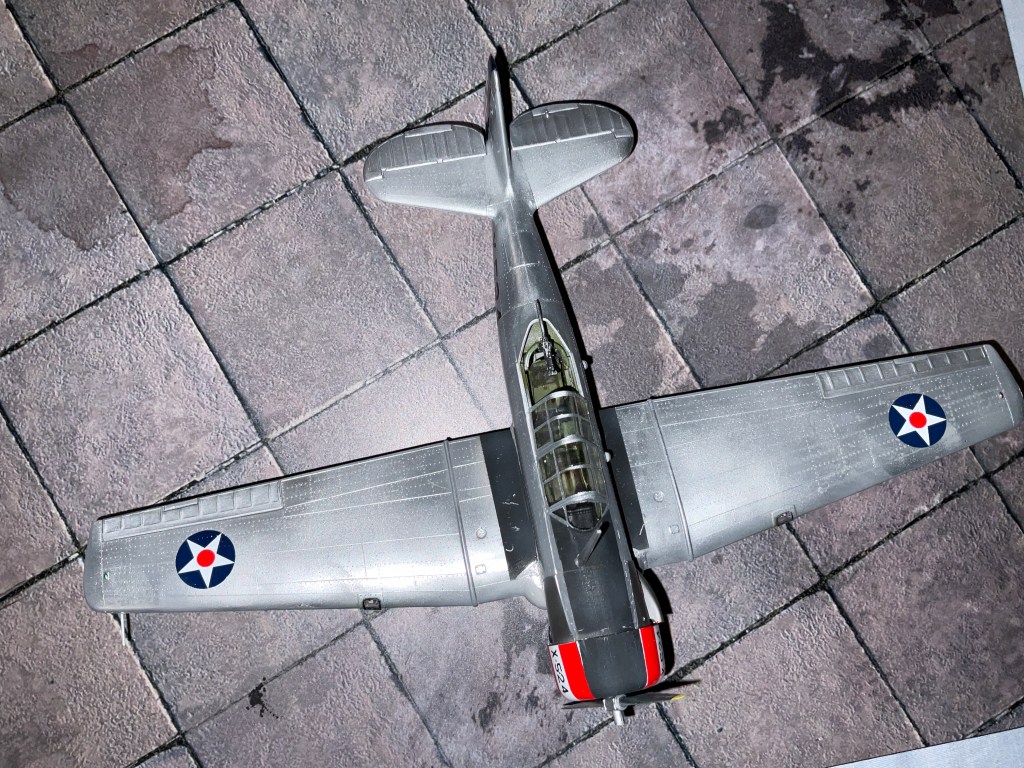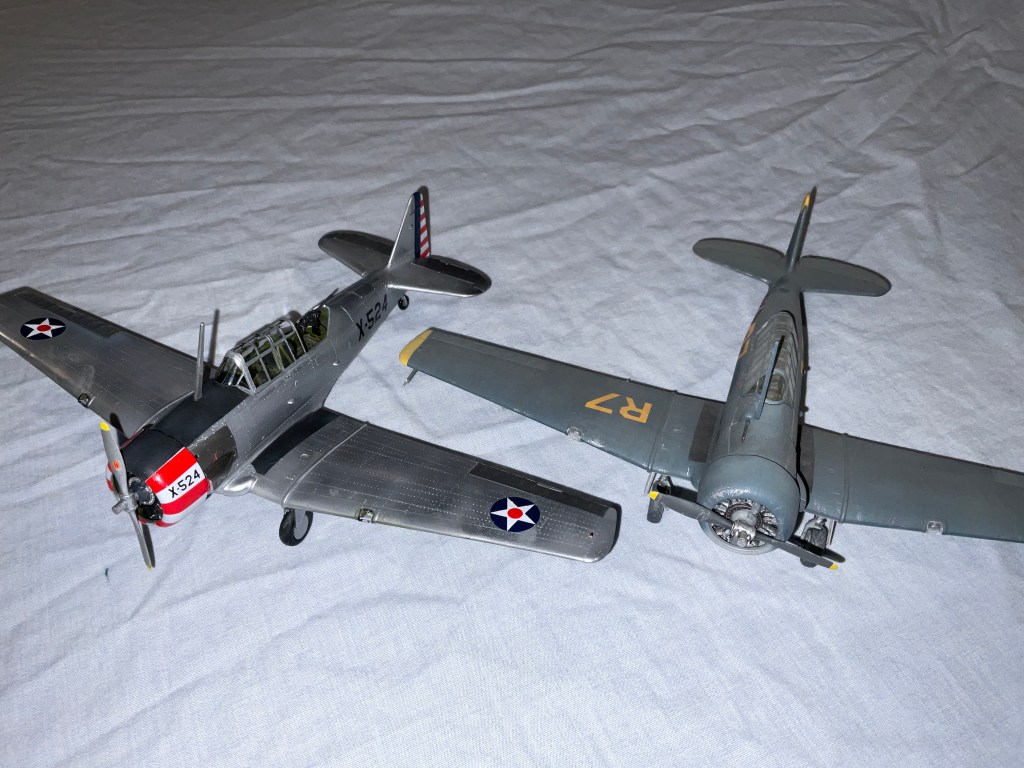Certainly one of the best known Advanced Trainers of the War.

Let’s take a quick look at a common sight at a stateside AAF base.
In USAAF terminology, Advanced Training is a course, a syllabus. Its not a course for weeding out pilots. That was already done, mostly in Primary Training. When a student makes it to Advanced Training its expected they will pass and become a professional, useful pilot.


Advanced Trainers would have at least 600 horsepower to get students used to more combat ready aircraft. They were fully aerobatic, with full flight instruments and could be armed. In essence, all skills needed for actual combat could be learned in an Advanced Trainer.
Every branch of the US military had some sort of finishing school (or Transition Training) where the students flew actual current (or recently retired) combat aircraft before actually heading to a War Zone. But in theory, they’d already learned all their skills by the end of advanced training.

The Texan was first conceived in 1935. The BT-9 actually flew first, essentially the same airframe but with fixed gear and only 400 horse power. Yes, the first of the Texan family was actually a Basic Trainer. Which leads to the point the Texan was actually produced in a range of alternates. It served in the US Navy/Marines as the SNJ and the RAF (and other Commonwealth air forces) as the Harvard. Two different attempts at single engine fighters were built from it, under company designations NA-50 and NA-68 (the six NA-68 were built for Siam, but when that country cozied up to Japan just before the War the planes were impounded and served with the USAAF as P-64) and two-place close support aircraft as the NA-69 (10 were built for Siam. These were impounded and became A-27s. They served in combat in the Philippines). They were also license built in Australia and flew combat missions with the RAAF as both the CAC Wirraway and more heavily modified CAC Boomerang.
All told, the variant list is massive. The type also is likely familiar to many readers as Hollywood Zeroes, the tail easily looks the part! But after the War there weren’t any flyable Zeroes, and there were plentiful Texans…
Seriously, I wish there more kits out there of the many different versions!


This aircraft was based at Luke Field, in Phoenix Arizona at the start of the War. Arizona was, and is, an excellent climate for flight training. Most days the weather is clear and dry all day long. No weather imposed delays for urgent training.
Obviously this is a gunnery trainer. The single flexible .30 in the rear seat allows a new gunner a chance to shoot from a moving, airborne platform. They would often shoot at towed sleeves or ground targets.

This is the Monogram kit with Aeromaster Decals. The only complaint I could ever have with this kit is that it doesn’t come in enough variations! It is simple, goes together well, and looks like a Texan.


It was a nice hardworking little workhorse. It’s a shame there aren’t more variations as you say.
A strange part of me would love to do the A-27. Go figure!
Funnily enough, despite its starrng role as the Zero, I’ve never seen the “Harvard”, as we used to call them, masquerade as a Focke Wulf Fw 190. I would have thought on a nice foggy European day, that that might conceivably have worked.
No but it did duty as a Thunderbolt in “A Bridge Too Far”… And “Kelly’s Hero’s”.
Now the more I think of it, wasn’t the the plane in “A Bridge Too Far” in RAF markings? Maybe it was supposed to be a Typhoon?!
I’ve built that kit a few times…..love it, even the racer version molded in red plastic. The last one I did with Kiwi markings from Caracal.
Thanks for all the great info!
I think it is a classic kit, on of the very best of the sort of “old school” kit making.
Pingback: Theme Build 6 – Complete | Plane Dave